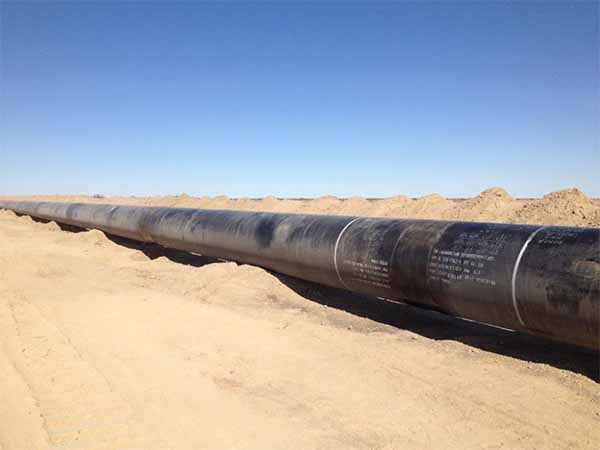The
anti-corrosion protection of pipelines is a key link to ensure the long-term safe operation of the entire system. At the joints of pipelines, due to welding or connection operations, the original anti-corrosion coating may be damaged. Therefore, re-coating or re-coating must be carried out. This process is called
field joint coating. The function of field joint coating is to provide continuous and reliable anti-corrosion protection for the weld seam and the exposed steel area around it, ensuring that the entire pipeline has consistent protective performance.

The importance of field joint coating
On-site joint coating is a key part to ensure the anti-corrosion continuity of the pipeline system.
In the construction of long-distance oil and gas transmission pipelines, submarine pipelines and buried pipelines, each pipeline will produce a "Field Joint Area" after welding.
If these areas are not effectively protected, corrosion, leakage and even structural damage may occur from then on.
Therefore, the main functions of Field Joint Coating include:
Prevent corrosion of welds and exposed steel;
Ensure the continuous bonding between the main line coating and the coating in the joint area;
It provides wear-resistant, impact-resistant and waterproof protection;
Enhance the overall service life and safety of pipelines;
The construction process of Field Joint Coating
The construction process of on-site joint coating needs to be adjusted according to the environment, the type of main line coating and the project standards. It generally includes the following steps:
1. Surface Preparation: Remove welding slag, oxide scale and impurities; Use sandblasting or grinding to make the surface roughness meet the coating requirements.
2. Primer Application: Apply primer to a clean steel surface to enhance adhesion and prevent oxidation.
3. Coating Application: Select the appropriate coating method based on the system (heat shrink tape, liquid epoxy, hot melt powder, etc.).
4. Curing and Inspection (Curing and inspection) : After the coating is cured, tests for thickness, adhesion and insulation performance are conducted to ensure that the protective performance meets the standards.
Common types of Field Joint Coating
Different coating systems can be selected in different engineering environments. The following are several common types:
Heat Shrink Sleeve (HSS) : Made of radiation cross-linked polyolefin material, it is waterproof on the outer layer and bonded with hot melt adhesive on the inner layer. It is easy to construct and has a low cost, and is often used in medium and low-temperature pipelines.
Fusible Epoxy powder coating (Fusion Bonded Epoxy, FBE) : applied by heating and melting epoxy powder, it has excellent adhesion and chemical resistance. It is mostly used for steel pipe joints in high-temperature or highly corrosive environments.
Liquid Epoxy Coating: It can be sprayed or brushed on site and is suitable for complex terrains or non-standard weld seams.
Polyurethane coating (PU) : It features high elasticity and strong wear resistance, making it suitable for applications with heavy mechanical loads.
Three-layer structure coating (3LPE / 3LPP) : It includes an epoxy base layer, a bonding layer and a polyethylene (or polypropylene) outer layer. It features outstanding anti-corrosion and mechanical protection performance and is currently the mainstream solution for submarine and long-distance transportation pipelines.
The application fields of Field Joint Coating
Field Joint Coating is widely applied in:
Onshore Pipelines
Offshore Pipelines
Subsea Pipelines
Buried water supply or gas transmission systems
For instance, in submarine pipe-laying projects, the main line anti-corrosion coating of pipe sections is often carried out on land first, while the joint areas after welding can only be re-coated at sea. Therefore, the on-site construction performance requirements are extremely high.
Summary
Field joint coating is a key link to ensure the anti-corrosion continuity and structural integrity of the pipeline system. Whether in onshore or subsea environments, the correct selection and application of appropriate on-site joint coatings are crucial guarantees for ensuring the long-term safe operation of oil and gas transportation systems.
